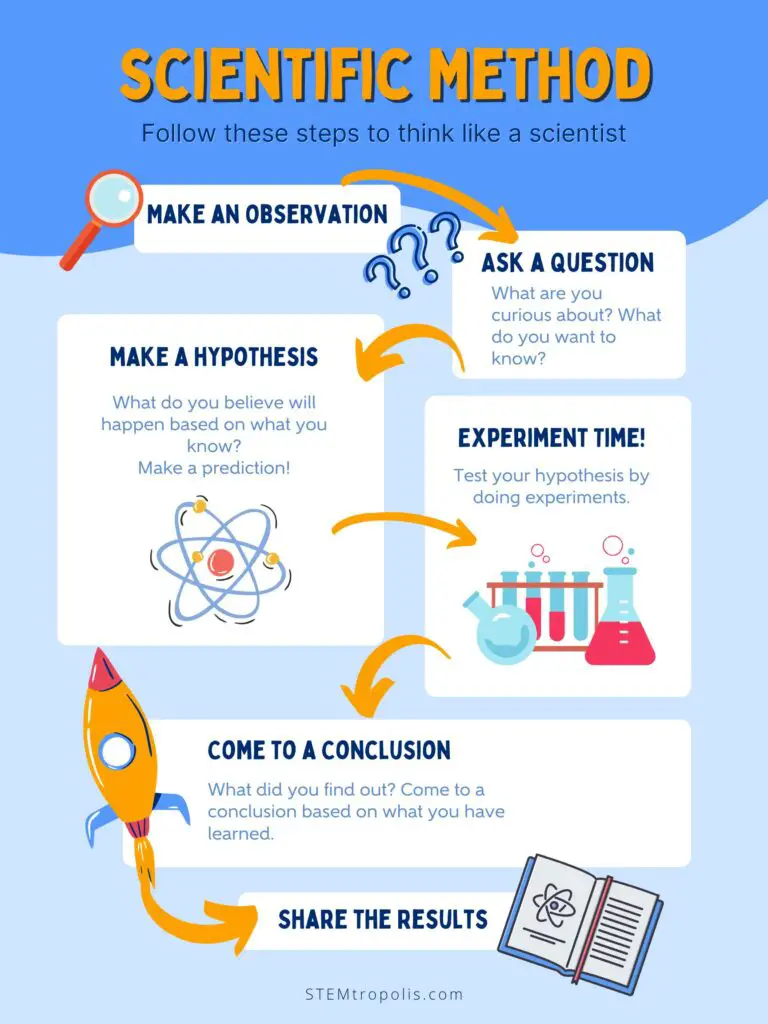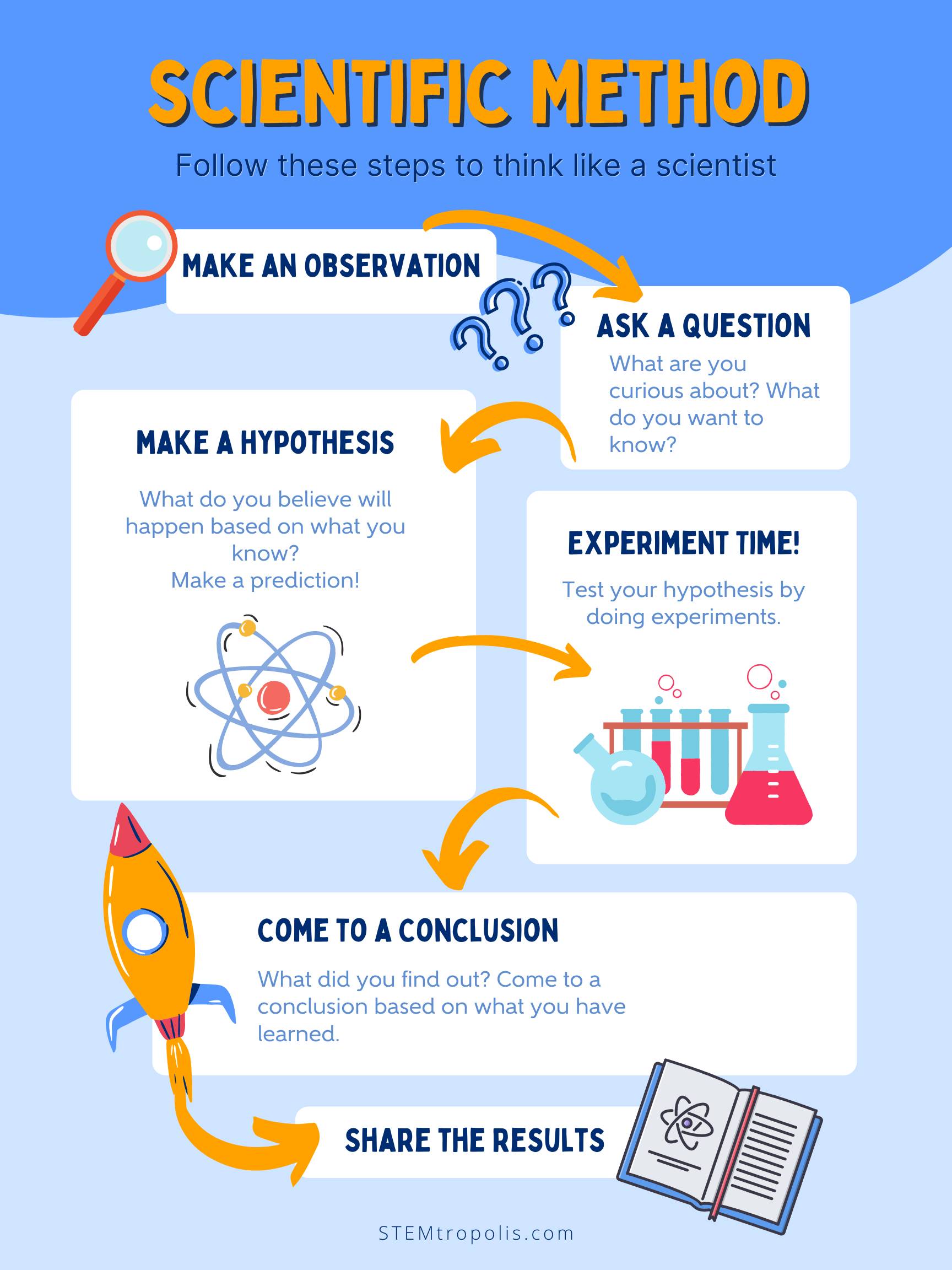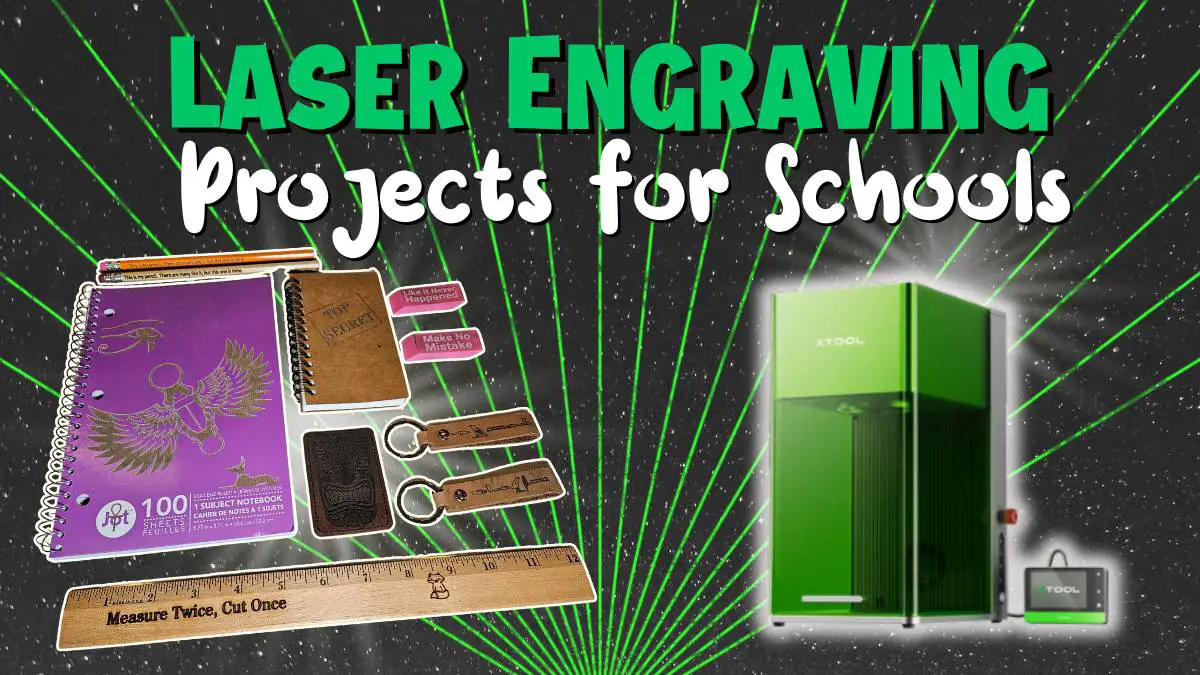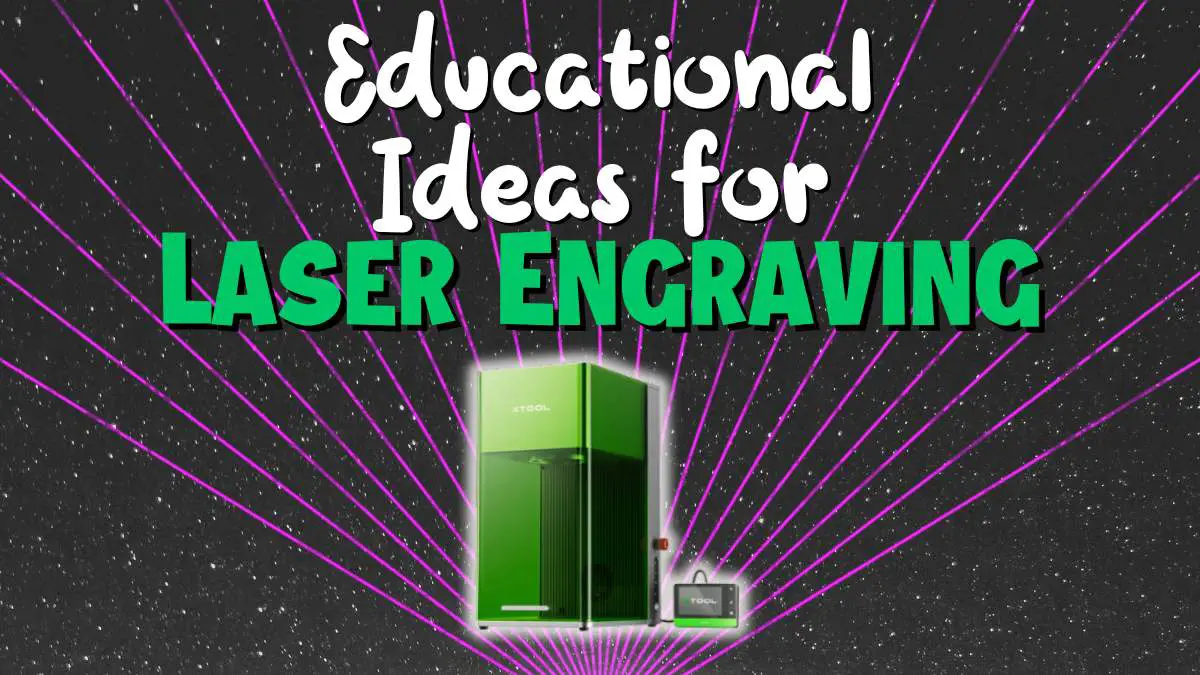What is the Scientific Method?
The Scientific Method is a systematic approach to understanding the world around us. It involves making observations, asking questions, forming and testing hypotheses, and drawing conclusions from the data.
Using the Scientific Method gives scientists a framework to test and validate new scientific discoveries. It also helps to identify which questions are the most important and provides insight into how we can answer them through science experiments.
Download your Free Scientific Method Printable
This standard, methodical scientific process can help you and your kids too! We’ve got a free printable to help illustrate the steps. Use it as a guide, poster, infographic or worksheet – You’ll find your download in our free printable library:
Understanding the steps involved and following them ensures that we can arrive at accurate conclusions and build upon our understanding of the world.

Why Should Kids Learn the Scientific Method?
The scientific method teaches critical thinking and problem solving skills. This method is a tool for students to understand the world around them and how things work.
By learning the basic steps of the scientific method, kids develop a foundation for asking questions and finding answers (whether they’re scientific or not.)
Learning the scientific method can be a fun experience for kids, especially with hands-on activities and simple experiments that can be done at home or in class. Check out our post on STEM Activities using the scientific method for some ideas to get you started. We’ve got a ton of simple science experiments you can try.
Benefits of Learning the Scientific Method
Learning the scientific method can be a valuable tool for students of any age, as it enhances their ability to think critically, solve problems, and develop analytical skills. In an increasingly complex and uncertain world, evidence-based decision making has become crucial. Scientific method not only provides a framework for identifying, understanding, and solving problems, but it also can help students make sound decisions by basing their conclusions on objective evidence.
The critical thinking and problem-solving skills developed through scientific method can be applied to a wide range of real-world scenarios. Students learn to formulate hypotheses, test them experimentally, and analyze outcomes to reach valid conclusions. This process requires students to evaluate evidence, consider multiple perspectives, and draw objective conclusions based on the data obtained.
Beyond its practical applications, learning the scientific method also helps instill a sense of intellectual curiosity and promotes the pursuit of scientific inquiry. Students learn to ask open-ended questions, generate testable hypotheses, and design experiments to answer scientific questions.
If you’ve already signed up, not need to do so again – check you email for the free library link, and you’ll find all the goodies there! (remember to check your spam folder if you didn’t get an email.)
Free Printable Scientific Method Steps
Looking for a hands-on tool to teach your students about scientific method steps and science experiments? Look no further than our free scientific method printable! This resource is available through the STEMtropolis Free Printable Library and is designed to guide elementary students through the basic steps of scientific inquiry.
Whether you’re a science teacher looking for an introductory lesson on the scientific method or a parent searching for fun science experiments to do with your kid(s), our free printable illustrates the steps and makes a fun poster, or infographic.
Download our free scientific method worksheet today and start exploring the exciting world of scientific inquiry!




